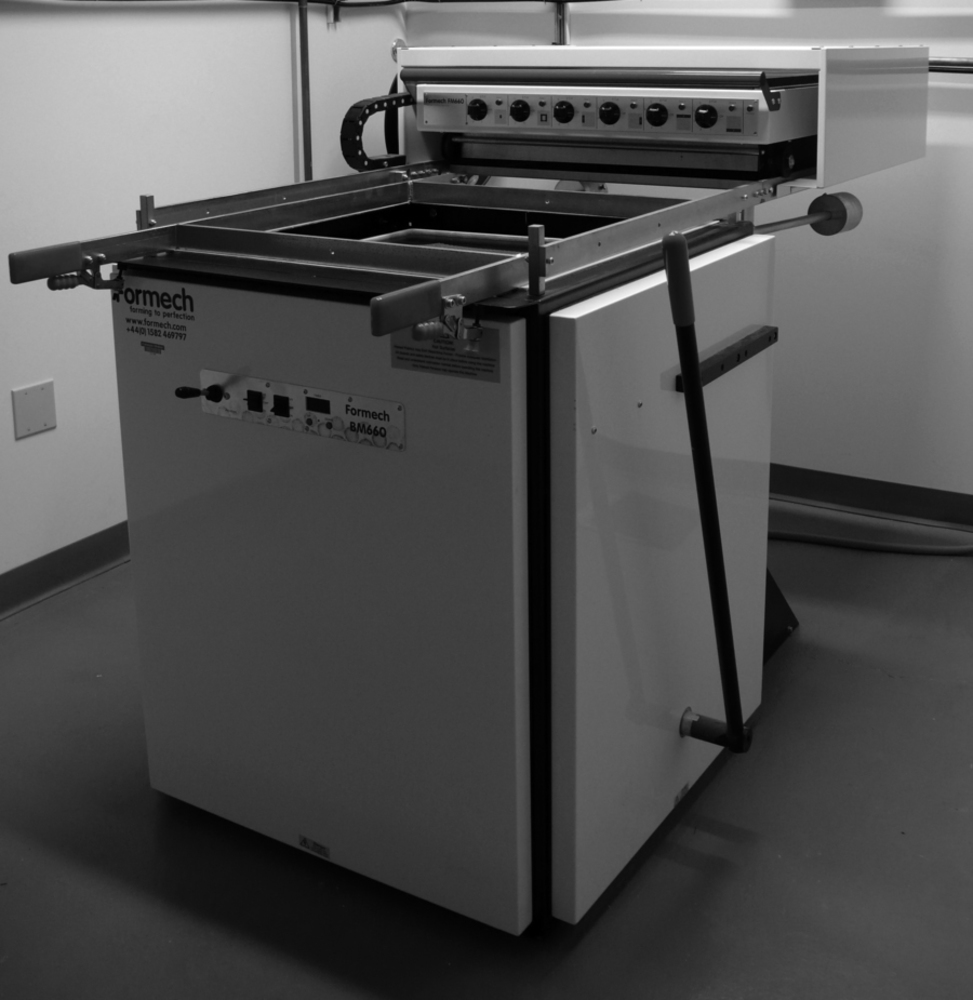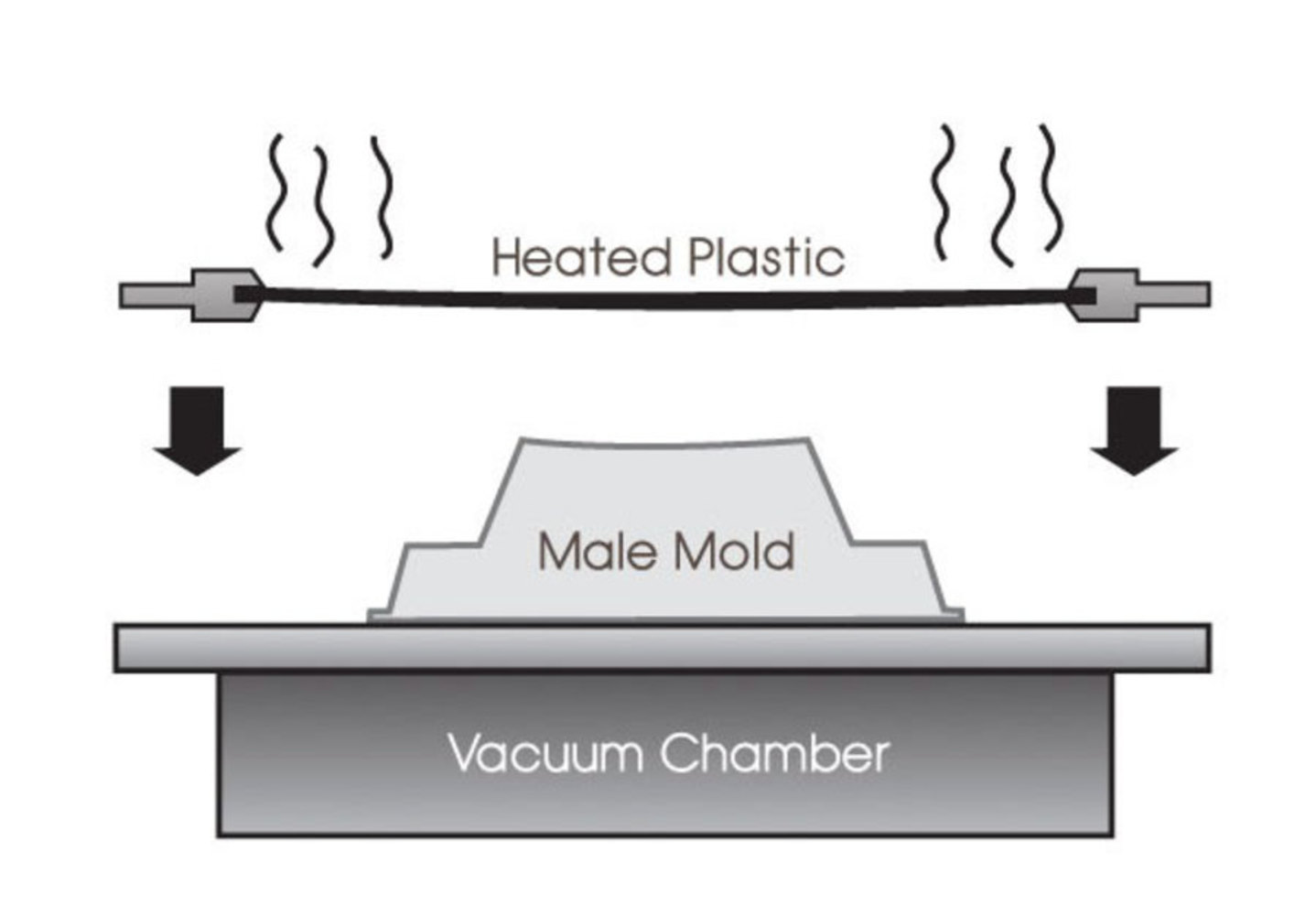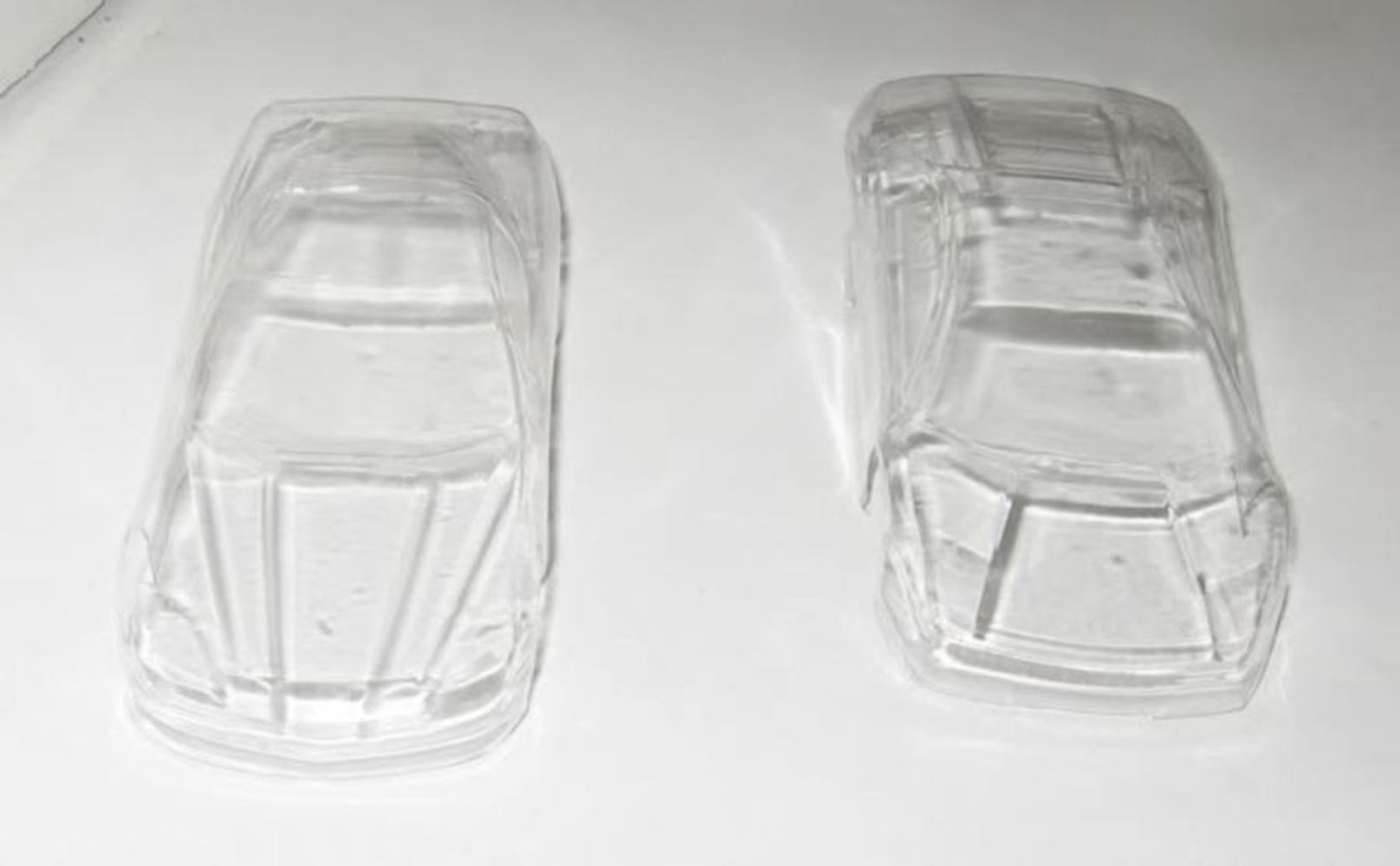Vacuum forming is the process in which a sheet of plastic is heated and then pressed against a model by a vacuum to create a mold.
How the Process Works
First, the desired model is made from a material such as wood or foam. It’s sides should be shaped at an angle so that the formed plastic can be easily removed.
A clamp frame is applied to hold down the plastic sheet. The heater then heats up the plastic to make the sheet moldable.
Once the plastic is heated to a malleable state, the mold is lifted to the sheet from below and a vacuum is applied to eliminate trapped air and suck the sheet into the mold.
The sheet is then cooled and ejected from the frame, having been formed to the shape of the model. (Sometimes, fans or nozzles are used to speed up the cooling process, by spraying a water mist onto the mold.)
After the mold is formed, excess material can be removed and recycled.


